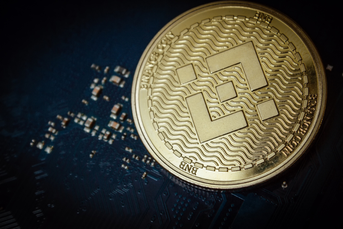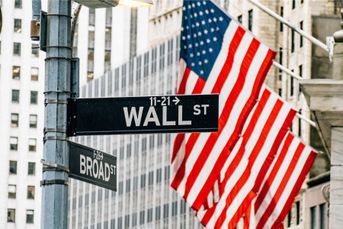America’s student loan debt crisis is about to worsen

As student loan interest rates rise again, worries grow about defaults and a drag on the economy.
While Wall Street and President Donald J. Trump tout news of a booming stock market and low unemployment, college students may be quick to roll their eyes. The improved economy has yet to result in higher wages for graduates already struggling to pay down massive debt, let alone ease the minds of students staring down the barrel of six-digit loan obligations yet to come.
Federal student loans are the only consumer debt segment with continuous cumulative growth since the Great Recession. As the cost of tuition and borrowing continue to rise, the result is a widening default crisis that even Fed chairman Jerome Powell labeled a cause for concern.
Student loans have grown almost 157% cumulatively over the last 11 years. By comparison, auto loan debt has grown 52%, while mortgage and credit card debt actually fell by about 1%, according to a Bloomberg Global Data analysis of federal loans. All told, there’s a whopping $1.4 trillion in federal student loans out there (through the second quarter of 2018), marking the second-largest household debt segment in the country, after mortgages. And the number keeps growing.
(More: Student loan rates contribute to increased college burden)
Student loans are being issued at unprecedented rates as more American students pursue higher education. But the cost of tuition at both private and public institutions is reaching all-time highs, and interest rates on student loans are rising. Students are spending more time working instead of studying. Experts and analysts worry that the next generation of graduates could default on their loans at even higher rates than did those immediately after the financial crisis.
“Students aren’t only facing increasing costs of college tuition; they’re facing increasing costs of borrowing to afford that degree,” said John Hupalo, founder and chief executive of Invite Education, an education financial planner. “That double whammy doesn’t bode well for students paying off loans.”
(More: Variety of tax benefits help offset the cost of college)
Federal student loan debt currently has the highest 90+ day delinquency rate of all household debt. More than 1 in 10 borrowers is at least 90 days delinquent, while mortgages and auto loans have 1.1% and 4% delinquency rates, respectively, according to Bloomberg Global Data. Although mortgage and auto loan delinquencies have dropped overall since 2010, student loan delinquency rates remain within a percentage point of their all-time high in 2012.
Delinquencies escalated in the wake of the Great Recession as for-profit colleges pitched themselves as an end-run around low-paying jobs, explained Judith Scott-Clayton, a Columbia University associate professor of economics and education. But many of those degrees ultimately proved useless, leaving graduates with debt they couldn’t pay back.
Students attending for-profit universities and community colleges represented almost half of all borrowers leaving school and beginning to repay loans in 2011. They also accounted for 70% of all defaults. As a result, delinquencies skyrocketed in the 2011-12 academic year, reaching 11.73%. Today, the student loan delinquency rate remains almost as high, which Ms. Scott-Clayton attributes to social and institutional factors rather than average debt levels.
(More: Why clients might benefit by sending their children overseas for college)
“Delinquency is at crisis levels for borrowers, particularly for borrowers of color, borrowers who have gone to a for-profit and borrowers who didn’t ultimately obtain a degree,” she said, highlighting that each cohort is more likely to miss repayments on their loans than other public and private college students.
Those most at risk of delinquency tend to be, counterintuitively, those who’ve incurred smaller amounts of debt, explained Kali McFadden, senior research analyst at LendingTree. Graduates who leave school with six-figure degrees that are valued in the marketplace, like post-graduate law or medical degrees, usually see a good return on their investment.
(More: New ways to pay for college)
Mr. Hupalo agreed.
“There’s a systemic problem in the student loan market that doesn’t exist in the other asset classes,” he said. “Students need to get a job that allows them to pay off their debt. The delinquency rate will rise as long as students aren’t graduating with degrees that pay back that cost.”
Moreover, while college dropouts and for-profit-college graduates often struggle to find jobs with high enough wages to pay for their educations, minority graduates are more likely to face discrimination in labor markets, making matters worse.
The cost of borrowing also has risen over the last two years. Interest on direct subsidized and unsubsidized loans jumped to 5% this year—the highest rate since 2009—while students seeking graduate and professional degrees now face a 6.6% interest rate, according to the U.S. Department of Education. (The federal government pays off interest on direct subsidized loans while a borrower remains a student or if the borrower defers loans upon graduation, but the government doesn’t cover interest payments on unsubsidized loans.)
(More: Companies start paying employee student loan debt)
“If you’re in an interest-based plan, you see cost go up, which worries me for students who are in school and have seen debt go up before they’ve even finished,” Ms. Scott-Clayton said. She said borrowers with smaller amounts of debt, those most at risk of default, should take advantage of income-based repayment plans if they can.
The deepening student debt crisis isn’t just bad news for students and recent graduates. The delinquencies that come with it may have a significant negative effect on the broader economy, the Fed chairman told Congress earlier this year.
“You do stand to see longer-term negative effects on people who can’t pay off their student loans. It hurts their credit rating, it impacts the entire half of their economic life,” Mr. Powell testified before the Senate Banking Committee in March. “As this goes on and as student loans continue to grow and become larger and larger, then it absolutely could hold back growth.”
As young adults struggle to pay back their loans, they’re forced to make financial concessions that create a drag on the economy. Student debt has delayed household formation and led to a decline in home-ownership. Sixteen percent of young workers age 25 to 35 lived with their parents in 2017, up 4% from 10 years ago, according to Bloomberg Intelligence.
“You have a whole generation of people that have a significant amount of student loans, and it’s crimping demand for other goods and services,” said Ira Jersey, the chief U.S. interest rate strategist for Bloomberg Intelligence. “As people live with their parents or cohabit with a non-partner, millions of houses and apartments aren’t being purchased. Neither is WiFi or that extra sofa. We think this is having a significant impact on the economy.”
Still, Mr. Jersey doesn’t think the student debt crisis is as severe as the subprime collapse of a decade ago.
“It’s much different than mortgages,” he said. “Even though it’s a crisis in that it increases the deficit and taxpayers have to pay more over time, it doesn’t present a systemic financial sector risk like mortgages in 2007.”
However, that doesn’t offer much consolation to students, six in 10 of whom report frequent anxiety about their debt, according to a report from Chegg, an education technology company. To quell fears of delinquency, Ms. Scott-Clayton said students should be proactive in researching different repayment plans.
“You have to wonder if the lack of transparency surrounding [student] loans is intentional,” she said. “Students shouldn’t assume their loan servicer has their best interest in mind.”
(More: Help your clients avoid disastrous mistakes when filling in college funding gaps)
Learn more about reprints and licensing for this article.








